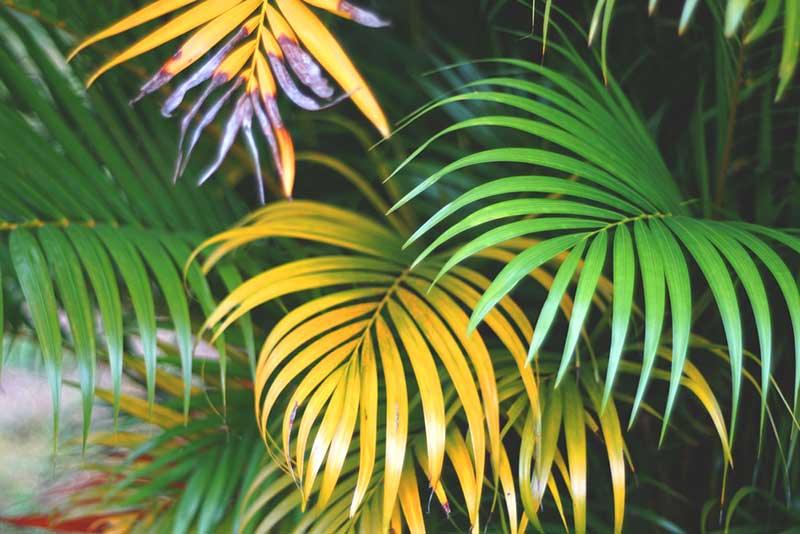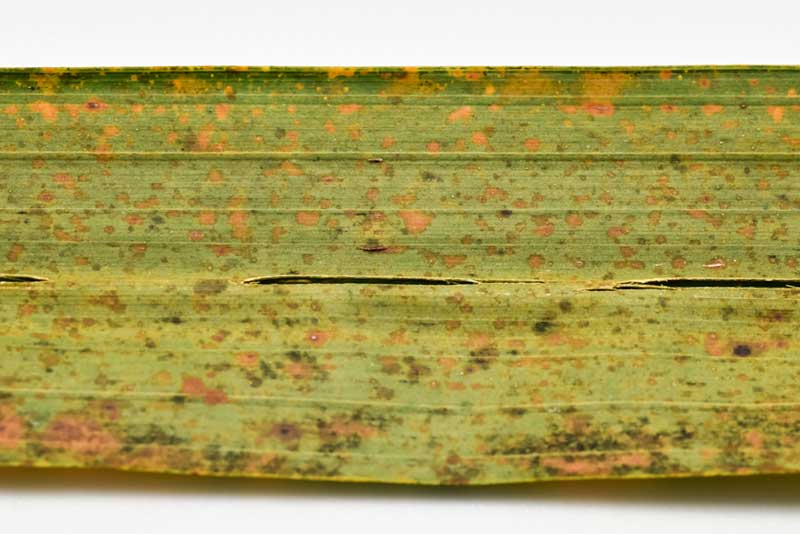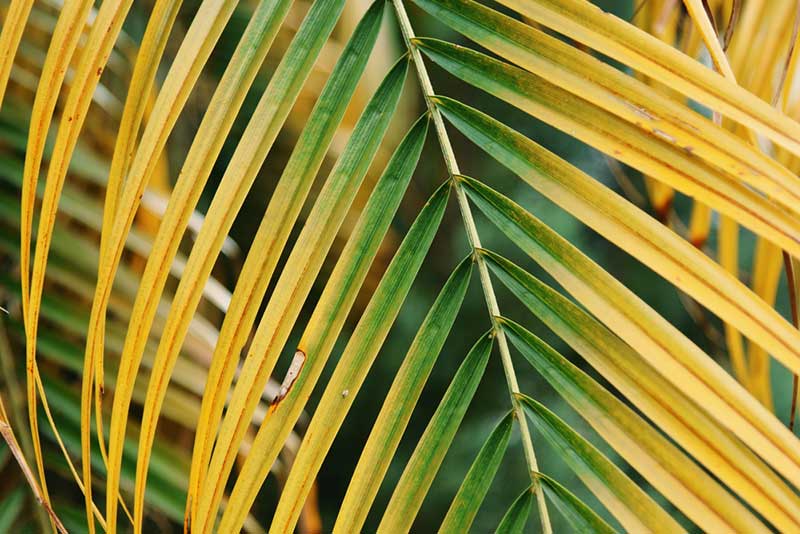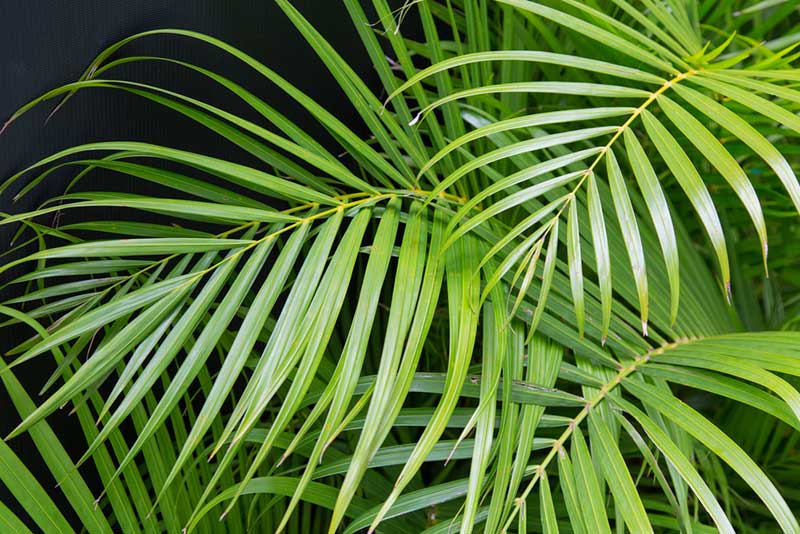Areca palms are beautiful plants that can tower up to 30 feet tall with proper care, maintenance, and space.
Despite having the nickname “yellow palm,” areca plants should not have yellow leaves. If your areca palm is turning yellow, you need to act quickly to prevent further damage to your plant.

Areca palms are also known as “golden cane palms,” with the name coming from the color of the plant’s petiole or connection of leaf to stem.
If other parts of your areca palm are yellow, something is probably not amiss. You’ll need to diagnose the problem quickly so your areca palm can continue to grow and thrive.
Common Areca Palm Issues
Areca palms are both indoor and outdoor plants, so the conditions they’re kept in will affect how they grow. Some areca palm problems will only occur if the plant lives outdoors, or vice versa.
Yellowing, however, can affect both indoor and outdoor areca palms, though the reason the plant yellows may vary.
Lethal Yellowing
Lethal yellowing is a disease that affects all types of palm trees and plants, including the areca palm. While this disease is most common in coconut and date palms, it can affect any outdoor palm. Lethal yellowing is a phytoplasma disease spread by planthoppers.

The issue arose from people using coconut and date palm trees as lawn decorations. If a palm is around a park-like or golf course-like environment, it is at risk of contracting lethal yellowing.
There is no cure for lethal yellowing, but you can prevent it by keeping areca palms out of those conditions.
Outdoor areca palms are more susceptible to lethal yellowing, so it’s necessary to take preventative cautions to ensure it isn’t affected by the phytoplasma disease.
You can help prevent lethal yellowing by keeping your areca palm around other coconut palms resistant to lethal yellowing and keeping a lawn with heavy turf grasses.
Leaf Tip Burn
Leaf tip burn is something both indoor and outdoor areca palms can suffer from. As the name suggests, the leaf tips have “burned,” meaning they’ve turned yellow or brown and are not healthy.
While lethal yellowing has only one cause, the spread from planthoppers, leaf tip burn can affect areca palms for a few different reasons. Leaf tip burns commonly happen from:
- Overwatering
- Underwatering
- Cold air
- Compacted roots
- Bad soil conditions
Overwatering and Underwatering
If your areca palm is getting too much or too little water, it will have disastrous effects on the plant over time. Overwatering can lead to root rot, killing your areca palm.

On the other hand, underwatering leaves the soil too dry and will also kill your areca palm. Finding a balance for watering your palm is key to its survival.
Areca palms need moist but not oversaturated soil. You need to make sure your areca palm’s pot has enough drainage, so the plant doesn’t sit in a pool of water.
You’ll also want to make sure you use rainwater or distilled water on your areca palm, as water with fluoride in it will harm the plant.
Cold Air
Areca palms are tropical plants, automatically meaning they won’t do well in cold environments. If your areca palm is exposed to too much cold air, its leaves will turn yellow and brown. To combat this, make sure your areca palm is in an area with enough sunlight and humidity.
Keeping your areca palm out of the way of cold air is a straightforward task. You just need to ensure you don’t keep it near any air conditioning vents and cold windows.
Overexposure to heat can harm your areca palm as well, so make sure you’re not keeping it near any heat sources, either. Areca palms flourish in temperatures between 65 to 75 degrees.
Compacted Roots
Having a pot that’s the right size for your plant and its roots is crucial for proper growth. No plant will do well when cramped into a pot, which stunts its growth and compacts its roots. You’ll need to make sure your areca palm has ample drainage from both its pot and soil.
It’s best to re-pot your areca palm every other year so you can get some new soil in there and get rid of any salt deposits that may have accumulated. When the time comes, you’ll want to move your areca palm into a bigger pot if its root ball is too large for the same pot.
Bad Soil Conditions
Soil is where your areca palm gathers all its nutrients, so having a bad soil mixture will inhibit your plant’s growth.
Outdoor areca palms will need slightly acidic soil. Meanwhile, indoor areca palms will benefit from peat-based soil. To get ample drainage and a good pH balance, you may want to consider adding sand or peat moss to the soil mix.






